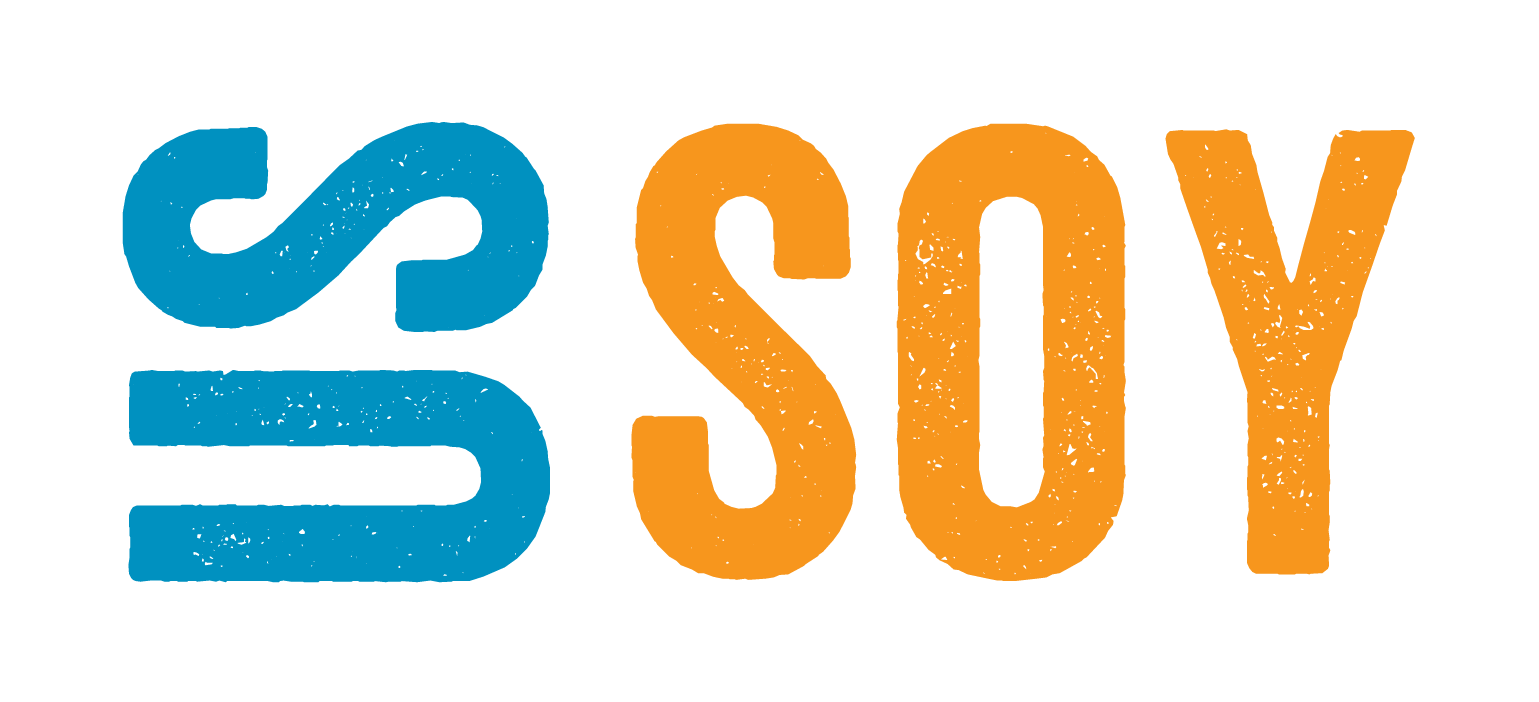Promotional Features
How soy can be a ‘green flag’ for consumers reading nutrition labels
The commitment to sustainability in US soybean production is crucial as this ensures that the industry's growth does not come at the expense of the environment, making it a reliable and responsible choice for food manufacturers and consumers alike.
This, together with the nutritional profile and superior performance of soybean ingredients, is meeting the economic and functional needs of the food industry while aligning with consumer demand for good-for-you, sustainably grown ingredients.
In recent years, sustainability awareness has increased the adoption of eco-friendly practices in the cultivation and processing of US soy, such as the reduction of chemical inputs, responsible sourcing, and increased supply chain transparency. The sector has also seen significant innovation with a focus on healthier products, with manufacturers enhancing nutritional profiles to reflect consumer trends.
As a subset of vegetable oils, soybean is the most widely used edible oil in the US, and consumption of soy-based foods is increasing. Soybeans cover four times more growing acreage compared to other oilseed crops, ensuring stable production volume, and 2024 soybean production is forecast to be the highest on record – 8% higher than in 2023.1
“Soybean production has been consistently growing,” says Richard Galloway, U.S. Soy consultant, an independent industry collaboration that promotes the positive global human impact of soy grown in the US. “In addition, we have also seen tremendous improvement to the variety, with sustainable practices, such as less chemical input.”
Soybean ingredients: Aligning with nutrition needs
Research shows that soy resonates positively with consumers: 50% of US consumers purchase soy monthly; 35% at least weekly; and four in 10 have increased their consumption of soy-based protein in the past year.2
Standard, commodity soybean oil is rich in linolenic fatty acid and provides most of the omega-3s in the American diet. In both its high oleic and conventional forms, soybean oil contains unsaturated fats, which may have a positive effect on heart health, helping to reduce risk of chronic diseases such as obesity and inflammation.3
Among consumers who eat soy, 72% agree it is heart-healthy and 63% associate soy with a high-quality plant protein.4 As a high-quality protein, soy is one of the few available plant-based proteins that provides all essential amino acids in appropriate amounts to meet the needs of children and adults. Additionally, the Food and Drug Administration's health claim states that 25 grams of soy protein a day as part of a diet low in saturated fat and cholesterol may reduce the risk of heart disease.5
Soy protein meets nutritional needs effectively by being a complete protein source. It also aids in weight management by promoting satiety and helping to control appetite.6 Studies show that soy protein may help lower cholesterol levels and reduce the risk of heart disease because of its high content of polyunsaturated fats, fiber, vitamins and minerals, and low content of saturated fat.7
“Soy protein is unique as a high-quality, plant-based protein,” says Galloway. “Most plant proteins are deficient in one or more of the essential amino acids, making them lower in protein quality. Soy has the right amount of essential amino acids in the proper ratio to meet human requirements and support healthy growth and development.”
Sustainability and supply of US-grown soy
For consumers and food manufacturers alike, choosing environmentally friendly produced ingredients like US soybean oil and soy protein may appeal to those prioritizing health and sustainability. US soy ingredients cannot only support an individual consumer’s health, but they can also support the environment by reducing the supply chain carbon footprint and contributing to the conservation of resources.
A recent survey found that, four in 10 US consumers are increasing their plant-protein consumption for environmental reasons; and most consumers (68%) believe soybeans are a sustainably grown source of plant-based protein.8
Soybeans are certified sustainable, contributing to a cleaner label and lower carbon footprint. Since 1980, soybean farmers have cut energy use per bushel by 35%. Through sustainable farming practices, farmland soil across the US now stores 100 times more carbon than the country emits annually, playing a crucial role in mitigating farming's environmental impact.9
Additionally, the abundance of soybean refining facilities compared to other oilseed processing facilities results in a shorter supply chain for the food industry. This leads to reduced transportation costs and a lower carbon footprint. Utilizing soy ingredients helps to minimize the carbon footprint associated with food production.
In the US, 95% of soybean producers are partnering with the USDA government programme, demonstrating their commitment to sustainability by practising conservation programs at farm level.10 Improving and preserving the soil on farms for future generations is a goal for many U.S. soybean growers, as well as providing the food industry with sustainably grown products.
“Soy has a unique sustainability story to tell among edible oils and edible proteins,” says Galloway. “How we make our ingredients sustainable is an important focus, and most people we talk to are positively surprised when they learn about the breadth and depth of soy’s sustainability programme.”
Performance of high oleic soybean oil
For food manufacturers, soy’s advantages extend beyond positive health effects and meeting consumer values of sustainability. Soy ingredients like high-oleic soybean oil encompass a neutral taste, deliver affordability and contribute to a clean label, long shelf-life, improved fat profile, enhanced functionality, and extended fry life.
These desirable characteristics make soybean oil an invaluable ingredient in food manufacturing. Soy products not only meet the health and sustainability demands of consumers – which drives sales for food companies – but also provide the performance that food manufacturers require.
High oleic soybean oil, a trait-enhanced soybean oil, which was developed in partnership with the food industry and U.S. Soy farmers, is the latest innovation in soybean oil technology.
“High oleic soybean oil is valuable for a couple of reasons,” explains Galloway. “First, it helps replace PHO [partially hydrogenated oils] more effectively in certain applications like cake shortening. Secondly, oleic fatty acid is an unsaturated fat, and able to replace things like stearic and especially palmitic acids.”11
In a functionality and sensory study, U.S. Soy tested the functionality of high oleic soybean in a range of applications. French fries were prepared in high oleic soybean oil, high oleic sunflower oil, mid oleic sunflower oil, conventional soybean oil and 75% oleic canola oil to compare.
After 24 days, high oleic soybean oil left less than 5% polymerization – resulting in a sticky film – on the equipment. It was also shown to be neutral in flavor in comparison to mid oleic oils whose light flavor intensified as the oil aged. The neutral flavor of soybean oil allowed it to stand out compared to the other vegetable oils tested allowing it to showcase the flavor profile of the food item, without introducing competing flavors.
A further study was carried out to evaluate high oleic soybean’s performance in baking applications. It showed that interesterified (the process of rearranging of fatty acids) high oleic soybean oil outperformed palm-based shortenings in white cakes and buttercreams. Cakes made with high oleic soybean shortenings were the most similar to cakes made with partially hydrogenated shortenings. Additionally, icing made with high oleic soybean oil was found to be smooth, light and easy to apply.
Partnering for sustainable solutions
U.S. Soy partners with the entire US soy value chain, from seed companies to food manufacturers, to grown and process sustainable, nutrient-dense and functional ingredients that food companies and consumers are looking for.
U.S. Soy’s commitment to increasing crop production and accelerating the supply of soybeans is vital for food companies aiming to meet the everchanging demands of consumers who trust U.S. farmers and their products.
If you are interested in learning more about how U.S. Soy ingredients can benefit your operation, request product samples here.
References
1. Economic Research Service U.S. Department of Agriculture. U.S. Soybean Supply To Rebound in Marketing Year 2024/25.
2. U.S. Soy Plant Protein Study, results released September 2023.
3. Soy Connection. Soybean oil for health.
4. U.S. Soy Plant Protein Study, results released September 2023.
5. Code of Federal Regulations. § 101.82 Health claims: Soy protein and risk of coronary heart disease (CHD).
6. Paddon-Jones, D.; Westman, E.; Mattes, R. D.; et al. (2008). Protein, weight management, and satiety. The American journal of clinical nutrition, 87(5), 1558S–1561S.
7. Sacks, F. M.; Lichtenstein, A.; Van Horn, L.; et al. (2006). Soy protein, isoflavones, and cardiovascular health: an American Heart Association Science Advisory for professionals from the Nutrition Committee. Circulation, 113(7), 1034–1044.
8. U.S. Soy Plant Protein Study, Results released September 2023.
9. Soy Connection. Sustainable Soybean Production.
10. ASA American Soybean Association. Soy Sustainability Assurance Protocol.
11. Thijssen, M, A. and Mensink R. P. (2005). Small differences in the effects of stearic acid, oleic acid, and linoleic acid on the serum lipoprotein profile of humans2. Volume 82, Issue 3, P510-516.


